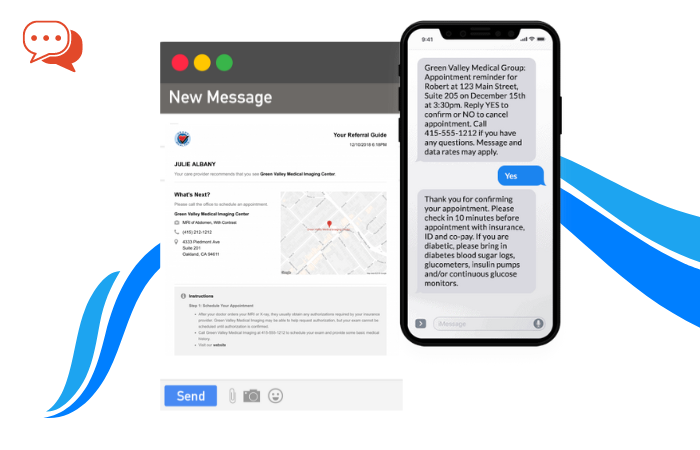The medical billing process can be a tedious, lengthy, and complex one. This can leave healthcare practitioners struggling to stay afloat financially. Can a healthcare practice increase revenue by improving its medical billing process? A reliable medical billing service or software can help reduce backlogs and increase revenue. They will also help your practice avoid errors in billing, coding, and documentation.
1. Collect Patient Information
Medical billing services are a convenient way for healthcare practitioners to reduce the time their front-office staff spends on mundane and repetitive tasks like coding. Instead, they can focus on patient-centric service and building relationships with patients.
A good medical billing company will make it clear upfront how they collect fees and provide their services. The most common methods include percentage-based fees, flat monthly fees, and a one-time set-up fee.

Many doctors and medical practices choose to use a third-party billing company because they find it more affordable than hiring staff to do this work in-house. In addition, these companies usually offer a more comprehensive suite of services than in-house billing teams.
They also often have more in-depth data and analytics to help medical practices determine if there is a need for adjustments to their processes to boost collections. Choosing an outsourcing partner that has these capabilities can increase revenue significantly.
Another benefit of working with outsourced physician billing services is that it will handle the complexities of insurance credentialing. This can be a task that in-house staff often lacks the training and expertise necessary to complete successfully.
Once an insurance credential is established, the medical biller must verify that the insurance information matches that on file with a patient’s health insurer. This can be a tedious and time-consuming process, but it is essential to ensure the accuracy of medical billing.
The more accurate the medical billing is, the lower the risk of errors and increased patient satisfaction. This also helps to maintain patient loyalty and improve your reputation as a healthcare provider. It also increases the number of referrals from patients to friends and family, who may need services.
2. Maintain Accuracy in Patient Billing
Accuracy inpatient billing is essential to the financial health of healthcare providers. Having accurate and timely billing can help healthcare practitioners avoid a negative impact on their financial situation, which in turn can boost revenue and improve the patient experience.
During the medical billing process, several steps must be completed for a claim to be submitted. These steps include claim preparation, payment posting, and accounts receivable follow-up. If any of these steps are missed or done incorrectly, it can significantly impact the revenue cycle of a physician’s’s practice.
The first step in claim preparation is scrubbing claims to ensure they are complete and accurate. This includes checking for coding errors and ensuring that all required patient, provider, and visit information is present on the document.
Once a claim is prepared, the biller submits it to insurance companies for processing. This can take days or months, depending on the complexity of the case and the time frame for submitting the claim to the insurance company.
Another important step in the billing process is the verification of insurance coverage, which involves checking to see whether the charge is covered by the patient’s insurer. If it is not, the claim is resubmitted.
As a healthcare practitioner, it is your responsibility to check and make sure that all of the procedures, services, and diagnoses you perform are covered by the insurance policy. Failing to do so can lead to denials or audits that could negatively affect your financial position.
Maintaining accuracy in patient billing can be difficult, especially in a fast-paced environment. However, with a few simple strategies, you can avoid common mistakes and increase your chances of getting reimbursed for the services you provide.
3. Collect Co-Payments at the Time of Service
Collecting co-payments at the time of service is a key component of medical billing services. Failing to collect these payments can lead to a delay in your revenue cycle and put a large dent in your overall revenues.
One of the best ways to boost patient collections is to have a consistent, compassionate, and data-driven conversation about payment. This can improve collection rates while fostering a positive patient experience.
A comprehensive patient payments policy will set expectations for patients and inform them of their financial responsibility before they visit the office. This helps avoid any confusion and ensures a smooth transition to paying their bills when they arrive at the front desk.
When patients know the amount of their co-pay or deductible upfront, they are more likely to pay it on the day of their appointment. This saves your practice money in the long run as it eliminates the cost of generating a billing statement for the next time they come to the office for care.
Another good way to increase collection at the point of service is to offer a prompt payment discount. This is a good way to increase revenue while also reducing the number of overdue balances that you have to write off.
However, be aware of any legal risks that you may encounter from routinely offering discounts to patients. For example, there may be state or federal laws that prohibit this practice. If you are concerned about the legal implications of this strategy, you should consult with a healthcare attorney to ensure your practices are compliant. These are just a few of the important factors to consider when developing your practice’s collection strategy.

Photo by Marek Studzinski on Unsplash
4. Communicate with Patients About Their Bills
Rather than waiting for a patient to ask about costs, healthcare practitioners can start the conversation early. They can inform patients of expected out-of-pocket expenses and their options for payment, according to a study published in the NEJM.
Taking the time to explain fees and financial responsibilities can improve patient engagement, reduce billing errors, and increase the likelihood of a bill being paid. In addition, healthcare practitioners can offer a variety of payment options that meet the needs of their patients’ circumstances and abilities.
Medical billing professionals interact with a wide range of people, including health professionals, insurance providers, and patients. Clear communications are essential to medical billing specialists, who must answer questions, explain charges, decipher policies, and follow up on outstanding bills.
The next step in the billing process is coding, or interpreting the information in a patient’s records and clinical documentation. Coders use a variety of codes, such as ICD-10 and CPT, to determine the amount to be billed. These codes are then entered into practice management software, scrubbed for accuracy, and submitted to individual insurance carriers.
Once a claim is submitted, the insurers review it to see if it meets their guidelines for payment. If it doesn’t, the biller corrects the error. This can be done manually or by using an automated system that retrieves the insurance card from a patient’s wallet, verifies their eligibility, and collects co-pays and balances based on their deductibles at the time of service.
The entire process of preparing and sending claims is a multi-step process and requires attention to detail. Medical billers must be familiar with all the regulations and rules that govern the insurance industry to make sure they are submitting accurate claims and getting paid. They should also understand why a claim was denied by the insurance company and work to find a solution that is fair and appropriate for both parties.
5. Avoid Billing Errors
Medical billing errors can be costly for healthcare practitioners, and patients are often negatively impacted by them. This is because they can end up having their claims rejected, or they may have to wait for payment from the insurance company.
In addition to causing a financial burden, these errors can cause patients to feel frustrated or even angry about their care. They can also cause them to spend time on the phone, and this can take away from their ability to focus on their health.
Fortunately, there are many ways that you can avoid errors in your medical billing process. These include ensuring that you are up-to-date on changes in medical coding and modifiers and that your staff is properly trained.
One of the most common types of mistakes that billers make is submitting incorrect CPT codes for services. CPT codes are used to describe the type of service a patient received, and they are updated regularly. By keeping up-to-date on CPT code changes, you can ensure that your patients receive accurate, fair payments for their medical care.
Another mistake that medical billers can make is unbundling multiple procedures that were performed during the same visit. This can result in overbilling for a patient’s medical care, which is why it is important to use the correct CPT code for each procedure that is provided during an appointment.
Finally, medical coding is a constantly evolving industry that requires continued education and training. By staying up-to-date, you can avoid a wide range of mistakes that could result in denied or rejected claims and lower your revenue.











